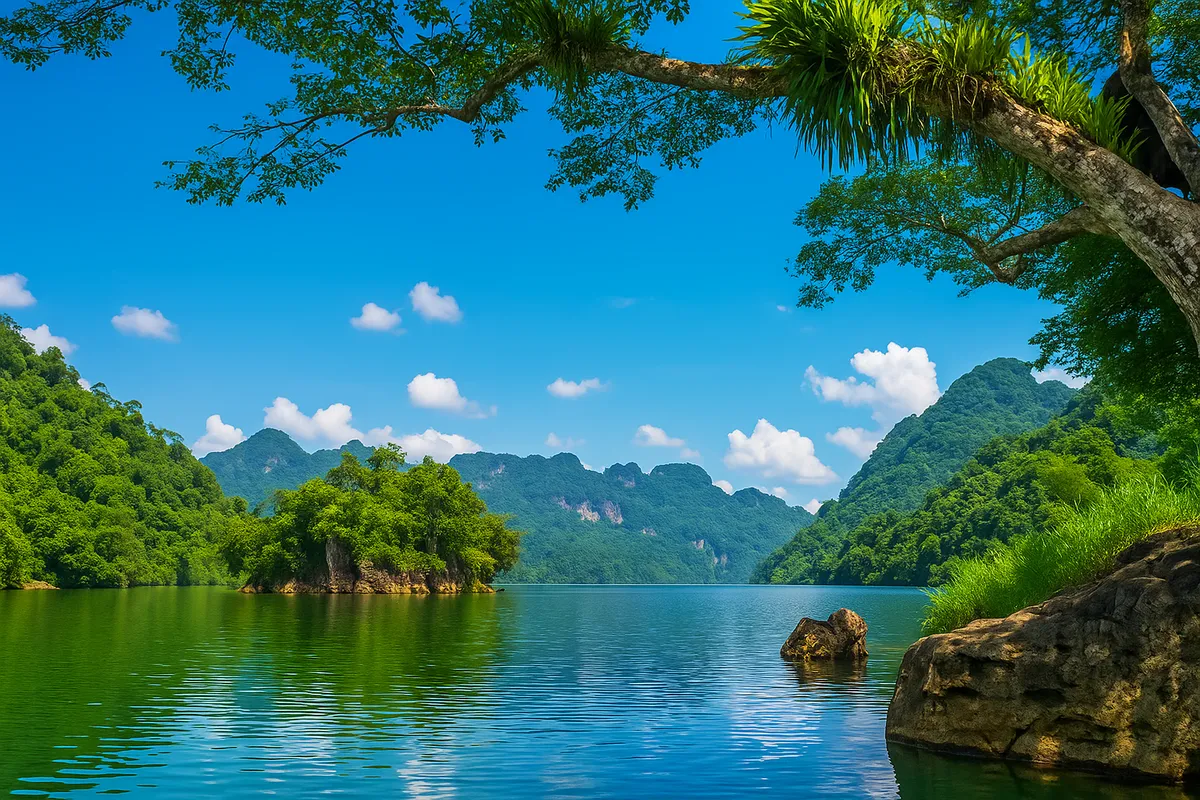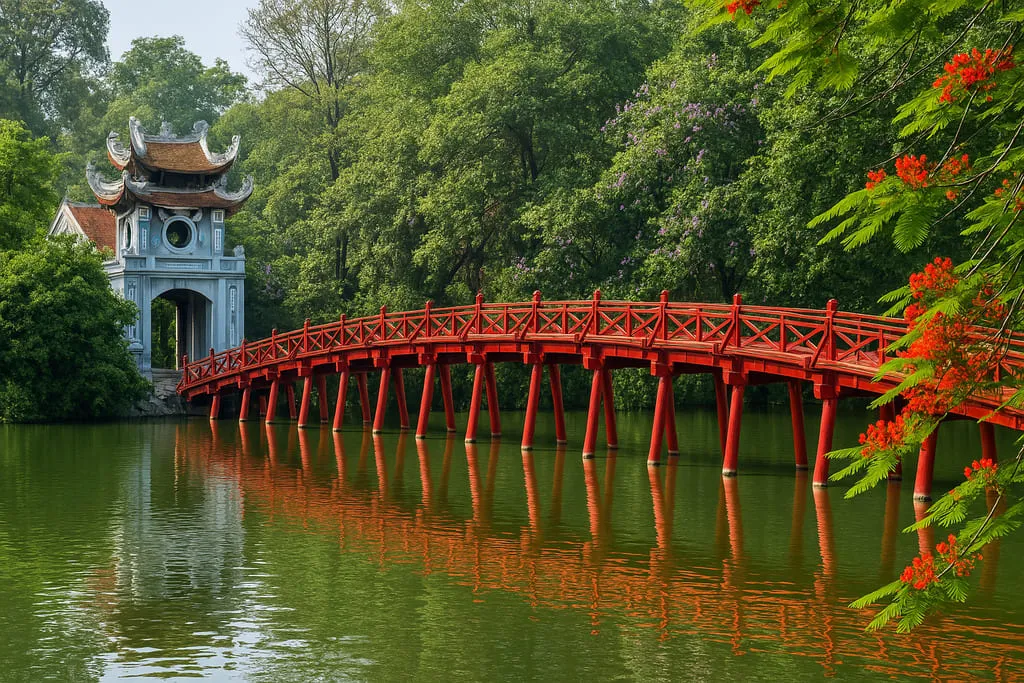Vietnam tourism faces unprecedented turning point after province merger
- Tuesday, Jun 03, 2025, 09:19 (GMT+7)
Vietnam tourism faces unprecedented turning point after province merger
The policy of merging administrative units at the district and commune levels is gradually being implemented across many provinces in Vietnam. This sets the stage for significant changes in governance structures, resource allocation, and socioeconomic development directions. Among these, tourism emerges as a noteworthy highlight, especially in provinces rich in natural and cultural assets. This article analyzes localities with the potential to become new tourism hubs following the mergers, drawing on data from industry reports, tourist behavior trends, and market accessibility capabilities.
The reality of the merger implementation shows that certain areas with compatible natural conditions and infrastructure are expected to undergo major transformations.
In the North, after administrative boundary adjustments, Lào Cai and Yên Bái are poised to form a linked tourism cluster of Sa Pa – Mù Cang Chải – Văn Chấn, capable of developing integrated highland experience products. According to data from the Vietnam National Administration of Tourism in the first quarter of 2025, Sa Pa welcomed over 800,000 visitors, a 27% increase compared to the same period last year. Meanwhile, Văn Chấn recorded an impressive 34% growth in domestic visitors after focusing on restructuring its resort infrastructure. The administrative linkage between these provinces not only helps optimize tourism promotion budgets but also creates well-connected products that align with the rising trend of experiential and leisure tourism favored by younger travelers.
In the Central region, Thừa Thiên Huế and Quảng Trị are gaining attention as they redefine their economic-tourism spatial planning. Specifically, the draft merger of district-level administrative units in Huế aims to establish an integrated model of “heritage, sea, and ecology,” linking the Imperial Citadel, Tam Giang Lagoon, and the coastal areas of Thuận An – Hải Dương into a multifaceted tourism complex. The 2024 domestic market strategy report by Outbox Consulting indicates that destinations offering interconnected experiences have an average length of stay 1.7 times higher than standalone locations. This supports the hypothesis that post-merger Thừa Thiên Huế could increase its annual visitor count to 5 million, especially if its cultural, ecological, and leisure elements are cohesively developed.
In the South, Kiên Giang Province stands out as a special case. The merger of island communes and coastal towns into Phú Quốc City carries not just administrative significance but also creates Vietnam’s largest “marine-island tourism superzone.” According to Agoda’s 2024 travel report, Phú Quốc was the most searched destination in Vietnam during the summer peak season. The expansion of jurisdiction allows unified management over beaches, primary forests, and marine zones supporting adventure tourism. Additionally, the synchronization of data systems, licensing, and communications reduces the time to market for new tourism products, lowers investment costs, and enhances competitiveness against international destinations like Phuket or Bali.
Beyond these localities, Quảng Ninh is also reorienting itself into a comprehensive coastal tourism city following administrative streamlining. The province is focusing on developing the “golden triangle” of Hạ Long – Uông Bí – Móng Cái. Merging smaller wards into Hạ Long City simplifies construction permits and expedites large-scale resort projects. According to the provincial Tourism Development Advisory Council, Hạ Long is preparing a dossier to be recognized as a “national-level tourism city,” a title that would unlock infrastructure, promotion, and investment incentives. With nearly 12 million visitors in 2024, this administrative restructuring is expected to usher in a phase of qualitative growth, moving beyond reliance on short-stay visits.
However, administrative mergers alone are not the ultimate catalyst. The key to truly becoming a “tourism paradise” lies in a locality’s ability to integrate visitor behavior data, optimize operations, and preserve local identity within the new administrative framework. Case studies from destinations like Đà Lạt (Lâm Đồng) and Hội An (Quảng Nam) show that, even without changing their boundaries, they have maintained lasting appeal through focused planning and effective communication. This suggests that beyond the advantages of mergers, breakthrough development requires serious investment in destination management capacity, service quality, and market connectivity.
From a consumer behavior perspective, a report by Booking.com released in early 2025 shows that over 60% of Vietnamese travelers choose destinations based on a combination of landscape, cuisine, and local cultural activities. Therefore, regions that can offer a cohesive experience cluster after merging will hold a competitive edge. Furthermore, the rising demand among young travelers for novel, uncrowded destinations with good services presents both challenges and opportunities for provinces undergoing administrative restructuring.
Considering all criteria—resources, infrastructure, legal frameworks, and market trends—it is foreseeable that Phú Quốc and Thừa Thiên Huế are the most likely to become post-merger “tourism paradises.” Phú Quốc has strengths in marine and island tourism as well as international accessibility, while Thừa Thiên Huế combines heritage with a model that integrates ecology, culture, and leisure. Both are aligning their administrative and policy adjustments to create a solid foundation for developing tourism as a key economic driver.
As the nation enters a phase of large-scale administrative reorganization, reevaluating tourism potential through the lens of regional linkage, product integration, and data synchronization will be the key for provinces not only to grow rapidly but also sustainably. Identifying the next “tourism paradise” is not merely about visitor numbers or post-merger land size, but about how each locality transforms its advantages into memorable experiences, enduring appeal, and long-term traveler loyalty.

 CHECKIN.VN
CHECKIN.VN








Share on